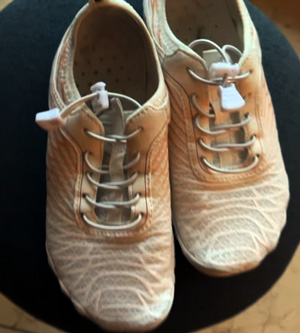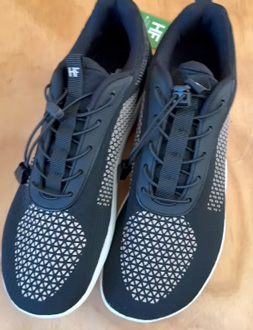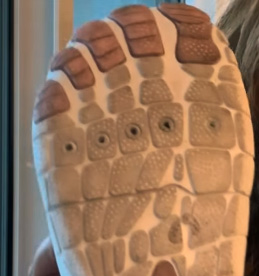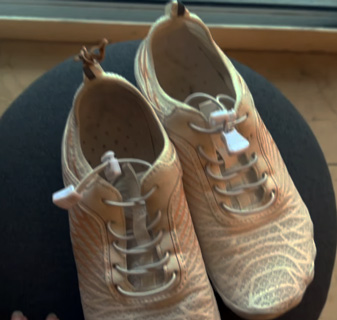Hey there, fellow shoe enthusiasts! If you’re on the hunt for footwear that feels like a second skin while boosting your foot health, let me introduce you to the Hike Lorax Pro Barefoot Shoes. I’ve been wearing these for months, and trust me, they’re a game-changer. With their wide toe box and minimalist design, they’re perfect for anyone craving natural movement. In this article, I’ll share my honest experience, break down the pros and cons, compare them to other brands, and give you tips to maximize their potential. Ready? Let’s dive in!
My Journey With The Hike Lorax Pro Barefoot Shoes

I stumbled across the Hike Lorax Pro Barefoot Shoes while scrolling through social media, bombarded by ads promising “the ultimate barefoot experience.” Skeptical but intrigued, I decided to give them a shot. As someone who’s always on their feet—whether walking my dog, hitting the gym, or running errands—I needed shoes that could keep up without causing aches. After six months of wearing them almost daily, I’m ready to spill the tea on what makes these shoes special (and where they fall short).
The Lorax Pro is designed to mimic walking barefoot, with a 4mm thin sole, a wide toe box, and zero-drop construction. It’s marketed as a versatile shoe for hiking, casual wear, and even light workouts. But does it live up to the hype? Let’s break it down with my real-world experience, focusing on what worked, what didn’t, and how they stack up against competitors.
Pros Of The Hike Lorax Pro Barefoot Shoes
Read More: My Thought on Adidas Samba Vs. Samoa
Here’s why I’m obsessed with these shoes and why you might fall in love with them too:
- Unmatched Comfort for All-Day Wear: From the moment I slipped them on, they felt like walking on clouds. The soft, breathable upper molds to your feet, making them perfect for long walks or errands.
- Wide Toe Box for Happy Toes: My toes finally have room to splay naturally! This design reduces pressure and has helped ease my bunion pain, unlike traditional narrow shoes.
- Lightweight Like a Feather: At just a few ounces, these shoes don’t weigh you down. I barely notice them during my morning jogs, which is a huge plus for minimalist runners.
- Promotes Natural Gait: The zero-drop sole encourages a midfoot strike, which has improved my posture and reduced knee discomfort over time.
- Breathable Material Keeps Feet Cool: The polyester upper lets air circulate, so my feet stay fresh even on hot summer days. No more sweaty socks!
- Versatile for Any Activity: I’ve worn them for yoga, grocery runs, and light hikes, and they adapt seamlessly. They’re my go-to for a busy lifestyle.
- Stylish Enough for Casual Outfits: With sleek designs and fun colors, they pair well with jeans or leggings. I get compliments all the time!
- Affordable Price Point: Compared to other barefoot brands, the Lorax Pro offers great value without skimping on quality. My wallet’s happy!
- Easy to Pack for Travel: They’re so flexible you can roll them up in your suitcase. Perfect for vacations where you want to save space.
- Improves Foot Strength: After months of use, my foot muscles feel stronger, and my balance has improved, thanks to the minimalist design.
These pros make the Lorax Pro a standout for anyone looking to embrace barefoot-style footwear. The comfort and versatility are hard to beat, especially for the price.
Cons Of The Hike Lorax Pro Barefoot Shoes

No shoe is perfect, and the Lorax Pro has its quirks. Here’s what you need to know before buying:
- Not Waterproof at All: Step in a puddle, and your socks are soaked. The breathable upper is great for ventilation but terrible for wet conditions.
- Thin Soles Lack Protection: On rocky trails, I felt every pebble. These aren’t ideal for rugged hikes where you need more cushioning.
- Slippery on Wet Surfaces: The soles don’t grip well when it’s rainy. I nearly slipped on a wet sidewalk, so tread carefully!
- Sizing Can Be Tricky: They run slightly small, and my first pair was snug. I had to exchange for a half-size up, which was a hassle.
- No Arch Support: If you need extra support for flat feet or plantar fasciitis, these might not cut it without custom insoles.
- Durability Concerns: After heavy use, the soles show wear, and the upper has minor tears. They’re not built for intense daily abuse.
- Adjustment Period Required: Switching to barefoot shoes takes time. My calves were sore for a week as my feet adapted to the new gait.
- Not Ideal for Cold Weather: The thin material doesn’t insulate, so my toes froze during winter walks. Layering socks helps, but only so much.
- Limited Color Options: While the available colors are cute, I’d love more variety to match my wardrobe.
- Customer Service Hit-or-Miss: When I needed to exchange sizes, responses were slow. Some users report similar frustrations with returns.
These cons don’t make the Lorax Pro a dealbreaker, but they’re worth considering, especially if you plan to use them for specific activities like hiking or wet environments.
Comparison With Other Barefoot Shoe Brands
Read More: My Thought on Adidas Samba Vs. Samoa
How do the Lorax Pro shoes stack up against other big names in the barefoot world? Let’s pit them against VivoBarefoot, Merrell, and Xero Shoes to help you decide.
Hike Lorax Pro Vs. Vivobarefoot
- Comfort: Lorax Pro’s soft upper feels cozier out of the box, but VivoBarefoot’s leather options (like the Tracker II FG) feel more premium over time.
- Durability: VivoBarefoot wins here. Their puncture-resistant soles last longer on tough trails compared to Lorax’s thinner soles.
- Price: Lorax Pro is budget-friendly at around $50-$70, while VivoBarefoot’s shoes often cost $150+. Great for cost-conscious buyers.
- Traction: VivoBarefoot’s lugs grip better on slippery surfaces, making them safer for wet hikes than Lorax Pro.
- Weight: Both are lightweight, but Lorax Pro feels slightly airier, ideal for casual wear.
- Style: Lorax Pro’s sporty look is versatile, but VivoBarefoot offers more sophisticated designs for urban settings.
- Support: Neither has arch support, but VivoBarefoot’s trail models offer more sole protection for rugged terrain.
- Breathability: Lorax Pro’s polyester upper is more breathable than VivoBarefoot’s leather-heavy models, perfect for hot days.
- Ease of Transition: Lorax Pro’s flexibility makes it easier for barefoot newbies, while VivoBarefoot’s stiffer soles require more adaptation.
- Availability: Lorax Pro is mostly online via Hike’s site, while VivoBarefoot is widely available in stores for try-ons.
Hike Lorax Pro Vs. Merrell Trail Glove 7

- Comfort: Lorax Pro feels softer, but Merrell’s Vibram sole offers more ground feedback without soreness.
- Durability: Merrell’s soles are tougher, ideal for trail running, while Lorax Pro wears out faster on rough surfaces.
- Price: Lorax Pro is cheaper, but Merrell’s $100 price tag reflects better build quality.
- Traction: Merrell’s inverted tread grips trails better than Lorax Pro’s smoother sole.
- Weight: Both are ultra-light, but Lorax Pro’s thinner sole makes it feel less substantial.
- Style: Merrell’s sleek design looks sportier, while Lorax Pro leans casual with fun colors.
- Support: Neither offers arch support, but Merrell’s slightly thicker sole cushions better on rocky paths.
- Breathability: Lorax Pro wins for ventilation, as Merrell’s mesh can trap heat.
- Ease of Transition: Merrell’s stack height is slightly higher, making it easier for beginners than Lorax Pro’s ultra-thin sole.
- Versatility: Lorax Pro is better for casual wear, while Merrell excels in outdoor activities.
Hike Lorax Pro Vs. Xero Shoes Daylite Hiker Fusion
- Comfort: Lorax Pro’s upper is softer, but Xero’s wider toe box feels roomier for broad feet.
- Durability: Xero’s soles are more robust for hiking, while Lorax Pro’s thin soles wear quickly.
- Price: Lorax Pro is slightly cheaper, but Xero’s $80-$100 range offers better longevity.
- Traction: Xero’s 3.5mm lugs outperform Lorax Pro on uneven terrain.
- Weight: Both are super light, but Lorax Pro feels less structured, almost like a sock.
- Style: Lorax Pro’s colorful options pop more than Xero’s minimalist aesthetic.
- Support: No arch support in either, but Xero’s sole protects better against sharp rocks.
- Breathability: Lorax Pro’s material is airier, while Xero’s can feel warmer.
- Ease of Transition: Xero’s slightly thicker sole eases you into barefoot walking better than Lorax Pro.
- Warranty: Xero offers a solid warranty, while Lorax Pro’s return policy can be tricky.
Overall, the Lorax Pro shines for casual, budget-friendly use, but VivoBarefoot, Merrell, and Xero are better for serious hikers or those needing durability.
Maintenance And Tips To Get The Most Out Of Your Lorax Pro Shoes
To keep your Lorax Pro shoes in tip-top shape and maximize their benefits, follow these tips:

- Clean Them Regularly: Hand-wash with mild soap and water to remove dirt. I scrub mine gently with a soft brush to keep them fresh.
- Air Dry Only: Avoid dryers or direct heat, as they can damage the upper. I let mine dry overnight in a well-ventilated area.
- Rotate Pairs: To extend their lifespan, alternate with another pair. I switch between my Lorax Pro and Merrells to reduce wear.
- Use Thin Socks: For the full barefoot feel, wear thin or no socks. I love toe socks to enhance toe splay without bulk.
- Break Them In Gradually: Start with 1-2 hours daily to avoid soreness. I built up to all-day wear over two weeks.
- Add Insoles for Support: If you need arch support, try thin, flexible insoles. I use a $20 pair that fits perfectly.
- Avoid Rough Terrains: Stick to smooth paths or urban settings to prevent sole damage. I save mine for city walks, not rocky trails.
- Check Soles Regularly: Inspect for wear and tear. I noticed thinning after three months, so I’m more mindful of surfaces now.
- Store Properly: Keep them in a cool, dry place to prevent odor. I stuff mine with newspaper to maintain shape.
- Transition Slowly: Strengthen your feet with exercises like toe curls before going full barefoot. This helped me avoid calf strain.
These tips will keep your Lorax Pro shoes looking good and performing well, while helping your feet adapt to the barefoot lifestyle.
Frequently Asked Questions (Faq)
Yes, they’re great for casual wear and light activities! I love their comfort and wide toe box, which reduced my foot pain. However, they’re not ideal for rugged hikes or wet conditions due to thin soles and lack of waterproofing. If you’re new to barefoot shoes, they’re a solid, affordable entry point.
Hike Footwear is legit, but buyer beware. I ordered from their official site (hike-footwear.com) and received my shoes, though shipping took two weeks. Some users report issues with returns or slow customer service, so check their 30-day return policy and order directly to avoid knockoffs.
Barefoot shoes can be fantastic for foot health, but it depends on your needs. They strengthened my foot muscles and improved my posture, but the lack of arch support can be tough for flat feet or plantar fasciitis. Consult a podiatrist if you have foot issues before switching.
No, Lorax Pro shoes have zero arch support, which is typical for barefoot shoes. This promotes natural foot movement, but it might not suit everyone. I added thin insoles for extra comfort, which worked well without compromising the barefoot feel.
Conclusion: Step Into Comfort With The Hike Lorax Pro!
Read More: My Thought on Adidas Samba Vs. Samoa
If you’re ready to ditch stiff, cramped shoes, the Hike Lorax Pro Barefoot Shoes are calling your name. My experience with them has been mostly awesome—comfy, stylish, and great for everyday wear. Despite a few drawbacks like thin soles and tricky sizing, they’re a steal for the price. Whether you’re a barefoot newbie or a minimalist pro, these shoes will elevate your stride. Grab a pair, follow my maintenance tips, and enjoy the freedom of natural movement. Your feet will thank you!
